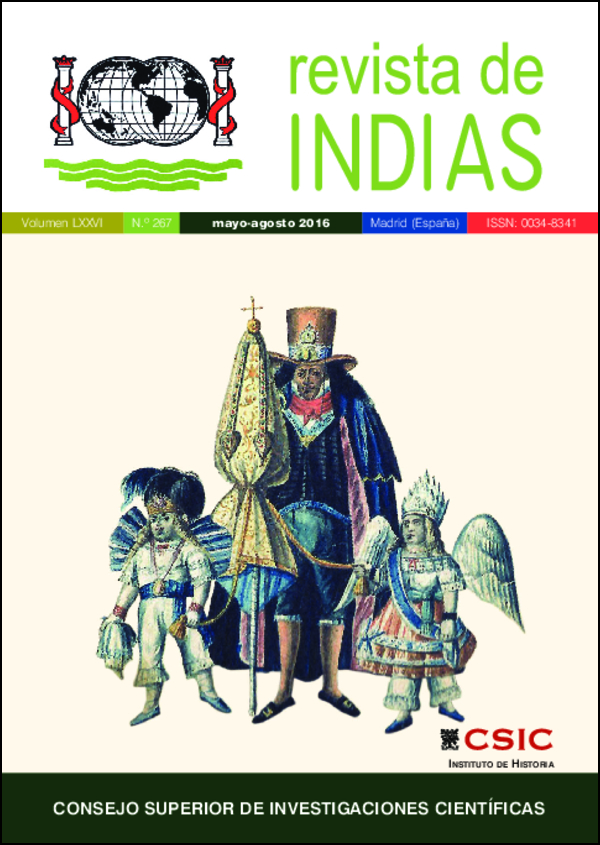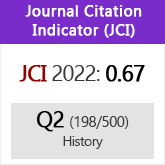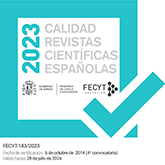Bandits and Californio identity in the second half of the nineteenth century: Tiburcio Vasquez
DOI:
https://doi.org/10.3989/revindias.2016.016Keywords:
Bandit, California, nineteenth century, liminality, bilingualism, CalifornioAbstract
The bandit Tiburcio Vasquez developed his career at a time of political and social struggle for California and the Californios, given that they became part of the United States of America after 1848. This paper examines the bilingual interview that Vasquez gave the day before his death sentence, together with other documentary sources about him in English and Spanish. I use the conceptual frame of liminality in order to expose the tools used to folklorize the past of the Californios. I examine conceptualizations about Vasquez, and who defined them, and the conclude that the Californio bandits, and especially Vasquez, represent the partial dissolution of the Californio identity, under pressure from the new social and political framework imposed by the United States.
Downloads
References
Álvarez, Salvador, “Conquista y encomienda en la Nueva Galicia durante la primera mitad del siglo XVI: bárbaros y civilizados en las fronteras americanas”, Relaciones, 116/XXIX (México, 2008): 135-188.
Álvarez Sellers, María Rosa, La tragedia española en el siglo de Oro, Vitoria, Diputación Foral, 1995.
Andrews, Hazel y Roberts, Les (eds.), Liminal Landscapes. Travel, Experience and Spaces in-between, London, Routledge, 2012.
Bancroft, H. H., California Pastoral, San Francisco, The Bancroft Press, 1886.
Banner, Stuart, “Preparing to Be Colonized: Land Tenure and Legal Strategy in Nineteenth-Century Hawaii”, Law and Society Review, 39/2 (Hoboken, Nueva Jersey, 2005): 273-314.
Berbel Rodríguez, José J., Orígenes de la tragedia neoclásica española, Sevilla, Universidad, 2003.
Boessenecker, John, “California Bandits: Social Bandits or Sociopaths?”, Southern California Quarterly, 80/4 (California, 1998): 419-434.
Bolton, Herbert E., “The Mission as a Frontier Institution in the Spanish-American Colonies”, The American Historical Review XIII/1 (Bloomington, 1997): 42-61.
Castañeda, Antonia I., “Gender, Race, and Culture: Spanish-Mexican Women in the Historiography of Frontier California”, Frontiers: A Journal of Women Studies, 11/1 (Ohio, 1990): 8-20.
Castillo, Pedro y Camarillo, Albert, Furia y muerte: los bandidos chicanos, Berkeley, University of California Press, 1973.
Cohen, Anthony P., “Personal Nationalism: a Scottish View of Some Rites, Rights and Wrongs”, American Ethnologist, 23/4 (Hoboken, Nueva Jersey, 1996): 802-815.
Davobe, Juan P., Nightmares of the Lettered City: Banditry and Literature in Latin America, 1816-1929. Illuminations, Cultural Formations of the Americas, Pittsburgh, University of Pittsburgh Press, 2007.
Delanty, Gerar, Community, Barcelona, Graó, 2003.
Desty, Robert (ed.), Constitution of the State of California adopted in 1879, San Francisco, Bancroft-Whitney Company, 1893.
Echavarría, José María, Circular del Presidente Interino de los Estados Unidos Mexicanos acerca de la capitalidad de Los Ángeles sobre la Alta California, México, 23 de mayo de 1835.
Gates, Paul, “The California Land Act of 1851”, California Historical Quarterly, 50/4 (California, 1971): 395-430.
Gennep, Arnold van, Los ritos de paso, Madrid, Alianza, 2008 [1909].
Giddens, Anthony, The Nation-State and Violence, vol. II, California, UC Press, 1985.
Giddens, Anthony, The Consequences of Modernity, Stanford, Stanford University Press, 1990. PMCid:PMC53469
Guerra, Francois-Xavier, Modernidad e independencias. Ensayos sobre las revoluciones hispánicas, Barcelona, Mapfre, 1992.
Hittel, Theodore H. (comp.), “Constitution of the State of California… 1849..”.. The General Laws of the State of California from 1850 to 1864, inclusive, San Francisco, A. L. Bancroft and Company, 1872, vol. I: 83-242.
Hobsbawn, Eric J., Bandidos, Barcelona, Crítica, 2001.
Hoyle, Millard, Crimes and Career of Tiburcio Vasquez, The Bandit of San Benito County and Notorious Early California Outlaw, Hollister, San Benito County Historical Society, 1927. También editado en el Evening Free Lance de Hollister.
Kanellos, Nicolas, y Martell, Helvetia, Hispanic Periodicals in the US. Origins to 1960, Houston, University of Texas, 1960.
Lamar, Howard R., “Land Policy in the Spanish Southwest, 1846-1891: A Study in Contrasts”, The Journal of Economic History, 22/4 (Cambridge, 1962): 498-515.
Lamar Prieto, Covadonga, “El discurso de Pío Pico y los primeros tiempos del español en la California estadounidense”, Belén Villarreal (ed.), Transnationality in the Luso Hispanic World, California, UCPress, 2012: 93-107.
Lamar Prieto, Covadonga, “Land Ownership as a Resource for Constructing Otherness in California”, Teresa Fernández Ulloa (ed.), Otherness in Hispanic Culture, Cambridge Scholars Publishing, 2013: 387-409.
Lamar Prieto, Covadonga, “From Native Language to Foreign Language: Spanish in the XIX Schools”, Voices, 1 (2014): 7-13.
Layne, J. Gregg, “Annals of Los Angeles part I, From the Founding of the Pueblo to the American Occupation”, California Historical Society Quarterly, 13/3 (California, 1934): 195-234.
Limbaugh, Ronald H. “Making Old Tools Work Better: Pragmatic Adaptation and Innovation in Gold-RushTechnology”, California History, 77/4 (California, Winter 1998/1999): 24-51.
Mason, William Marvin, The Census of 1790. A Demographic History of Colonial California, Banning, California, Ballena Press Publications, 1998.
Montejano, David, Anglos and Mexicans in the Making of Texas, 1836-1986, Austin, UT Press, 2003.
Moreno de Alba, José Guadalupe y Perissinotto, Giorgio, “Algunas consideraciones sobre el español de Santa Bárbara”, Nueva Revista de Filología Hispánica, XXXVI/ 1 (México, 1998): 171-191.
O’Sullivan, John L., “Annexation”, The United States Democratic Review, 17/85 (Nueva York, julio-agosto 1845): 5-10.
Padilla, Genaro, My History, not Yours: the Formation of Mexican American Autobiography, Wisconsin, University of Wisconsin Press, 1993.
Parodi, Claudia, “El otro México: español chicano, koineización y diglosia en Los Ángeles, California”, R. B. Villanueva and P. M. Butragueño, Realismo en el análisis de corpus orales: Primer Coloquio de Cambio y Variación Lingüistica, México D.F., El Colegio de México, 2011: 217-243.
Parra, Max, “Pueblo, bandidos y Estado en el siglo XIX mexicano. Notas a partir de El Zarco de Ignacio Manuel Altamirano”, The Colorado Review of Hispanic Studies, 4 (Boulder, Colorado, 2006): 65-76.
Parra, Max, “Pancho Villa y el corrido de la Revolución”, Caravelle. Cahiers du monde hispanique et luso-bresilien (CMLHB), 88 (Toulouse, septiembre 2007): 139-149.
Revere, Joseph Warren, A Tour of Duty in California, Nueva York, Joseph N. Baestier, 1846.
Robinson, W. W., Land in California. The Story of Mission Lands, Ranchos, Squatters, Mining Claims, Railroad Grants, Land Scrip, Homestead, Berkeley y Los Angeles, University of California Press, 1948.
Ruiz de Gordejuela Navarro, Jesús, “La independencia de México y las misiones de las Californias: españoles versus mexicanos, 1821-1833”, Boletín Americanista, 57 (Barcelona, 2007): 219-232.
Sánchez Albornoz, Julio, Despoblación y repoblación del Valle del Duero, Buenos Aires, Instituto para la Historia de España, 1996.
Servín, Miguel, “The Secularization of the California Missions: A Reappraisal”, Southern California Quarterly, 47/2 (California, 1965): 133-149.
Turner, Victor W., The Ritual Process: Structure and Anti-Structure, Chicago, Aldine Pub. Co., 1969.
Truman, Ben C., Life, Adventures and Capture of Tiburcio Vasquez. The Great California Bandit and Murderer, Los Angeles, Los Angeles Daily Star, 1874.
US Statuses at Large, Treaty of Peace, Friendship, Limits, and Settlement with the Republic of Mexico, 1848, vol. XI: 922-943.
US Statuses at Large, Act to Ascertain and Settle the Private Land Claims in the State of California, vol. IX. 31st, Congress session II, 1951, ch. 41: 631-635.
Zamorano, Agustín V. y Figueroa, José, Proclama del 14 de febrero como día festivo en honor de Vicente Guerrero, 1834.
Zentella, Ana Celia, Growing up Bilingual: Puerto Rican Children in New York, Oxford, Blackwell Publishers, 1997. PMid:9245740
Downloads
Published
How to Cite
Issue
Section
License
Copyright (c) 2016 Consejo Superior de Investigaciones Científicas (CSIC)

This work is licensed under a Creative Commons Attribution 4.0 International License.
© CSIC. Manuscripts published in both the printed and online versions of this Journal are the property of Consejo Superior de Investigaciones Científicas, and quoting this source is a requirement for any partial or full reproduction.All contents of this electronic edition, except where otherwise noted, are distributed under a “Creative Commons Attribution 4.0 International” (CC BY 4.0) License. You may read here the basic information and the legal text of the license. The indication of the CC BY 4.0 License must be expressly stated in this way when necessary.
Self-archiving in repositories, personal webpages or similar, of any version other than the published by the Editor, is not allowed.















